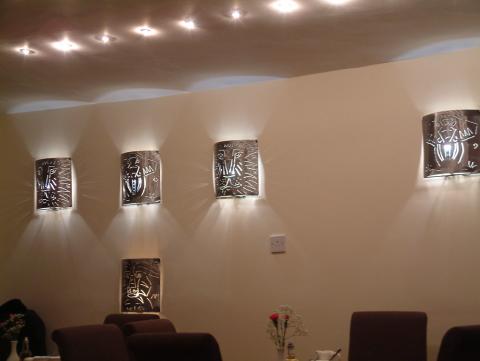
Recessed downlights are a great source of lighting output and look fantastic (although I personally wouldn’t have them in every single room in my house). If I had a pound for how many I have installed during my time as an electrician, I could probably buy a week’s holiday in Vegas!
In this blog, I am offering you some advice in what to look for when installing these in your property and some hints and tips about what products are currently out there on the market.
How many should I have?
Depends on the room size and what room you want them in. I have a mathematical calculation I use to determine how many you would want in any sized room to give the optimum level of bright light, however, while this may be ideal in a kitchen where you want bright lighting, it may not be suitable for rooms where you want to relax and unwind your mind e.g. the lounge, although you could always install a dimmer switch?....
What type should I have?
There are a few types of downlight that are currently available and they are as follows:
1. Integrated L.E.D downlight - These are a sealed unit with no replaceable components, so no bulb change. These products usually come with a 3-7-year warranty depending on the manufacturer. These can be good for people who may not be able to climb up a step ladder to change a bulb, however, once the unit goes, it will need completely renewing which may require altering the wiring above.
2. GU-10 ‘can’ downlight (230V) - These are simply a can with a GU-10 lamp holder in place. These are easily maintainable and have little that can go wrong with them, just the occasional lamp change if one blows, but if your putting decent quality bulbs in place, they will last and last 😊
3. MR16 low voltage downlight (12V) - Like the GU-10 canned body, but these take 12V lamps in conjunction with a voltage transformer. These are great to install in wet locations such as a bathroom where electric shock is at a higher risk, but the maintenance of these can be more costly and reliability of some transformers on the market today are poor in quality
Finally I have some do’s and don’ts prepared to share with you
DO
Install fire-rated fittings - These are essential in being an opening from floor to floor, allowing any fire to spread. Of course (touchwood), I hope you never need them, but its always better to ‘have and not need’ than to ‘need and have not’
Have these installed in straight lines of symmetry - Joist layouts above the ceiling can often put a spanner in the works in getting these a perfect equidistance away from each other. It is much easier to get away with a couple of measurements being slightly off if they are installed in a straight line. The naked eye will not pick up on a couple being slightly off
DO NOT
Install MR16 12V downlights - Yes, they exist and yes, they are pants! These are commonly mistaken to be more energy efficient, but the truth is, the lamp energy output is the same as a GU- 10, and then you have the additional cost of the transformer. You also have the maintenance cost of replacing the transformer when it eventually packs up, which it will sooner rather than later because of the excessive heat they give! Yes, they provide great protection against electric shock, but a quality mains model will be more than adequate in providing this anyway
Install chrome fittings inside a bathroom - They will corrode very quickly. Doesn’t make a difference if they are IP rated and waterproof, their going rusty! Stick to white plastic bezels in a room full of moisture

